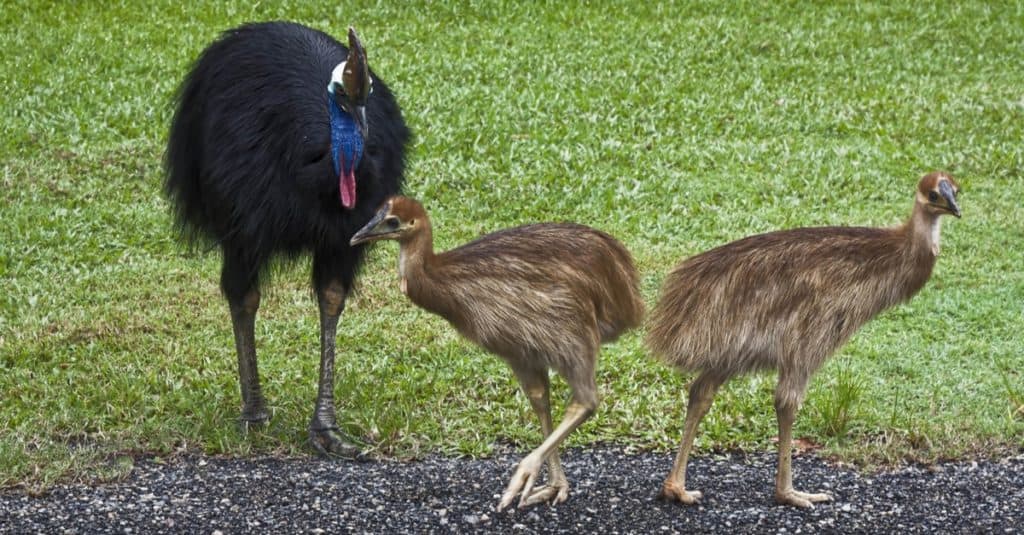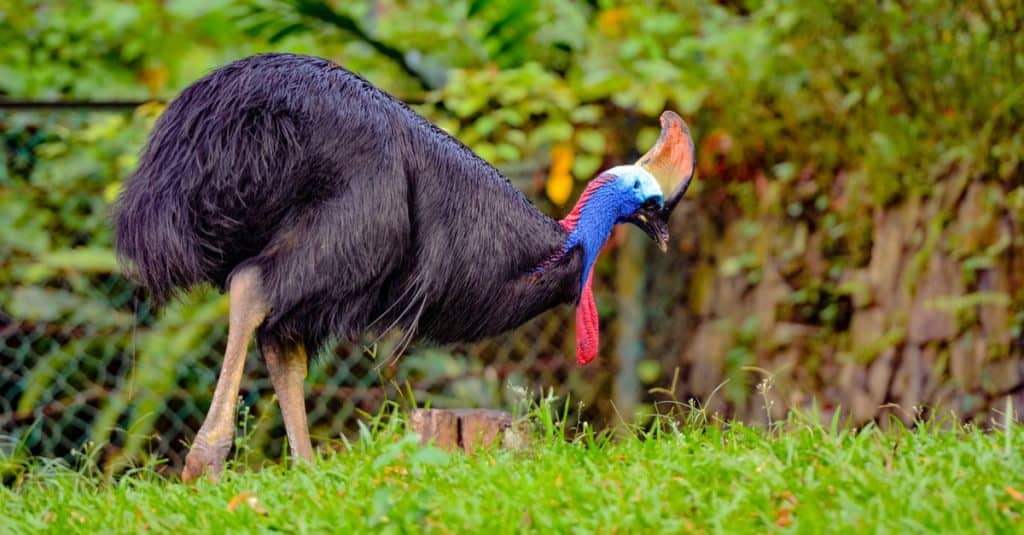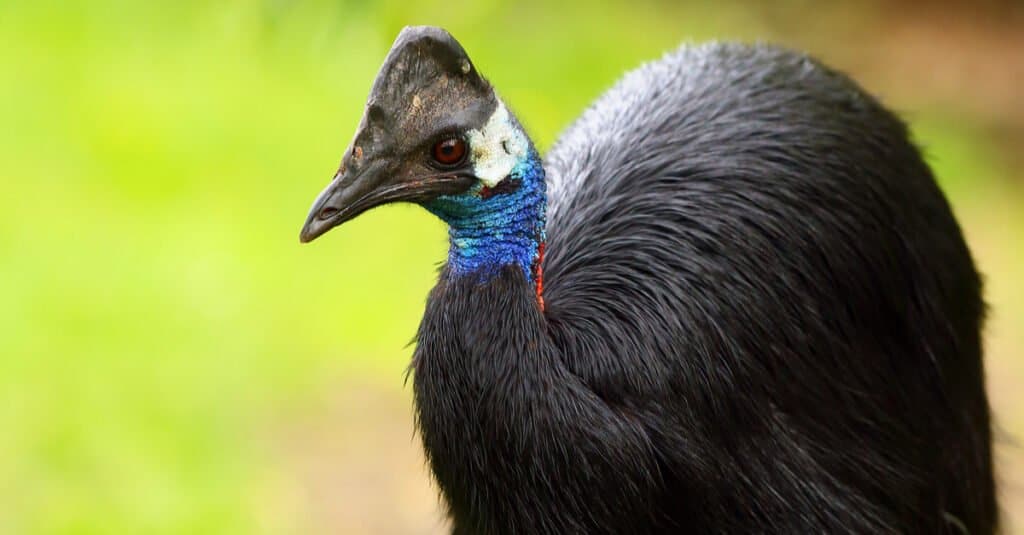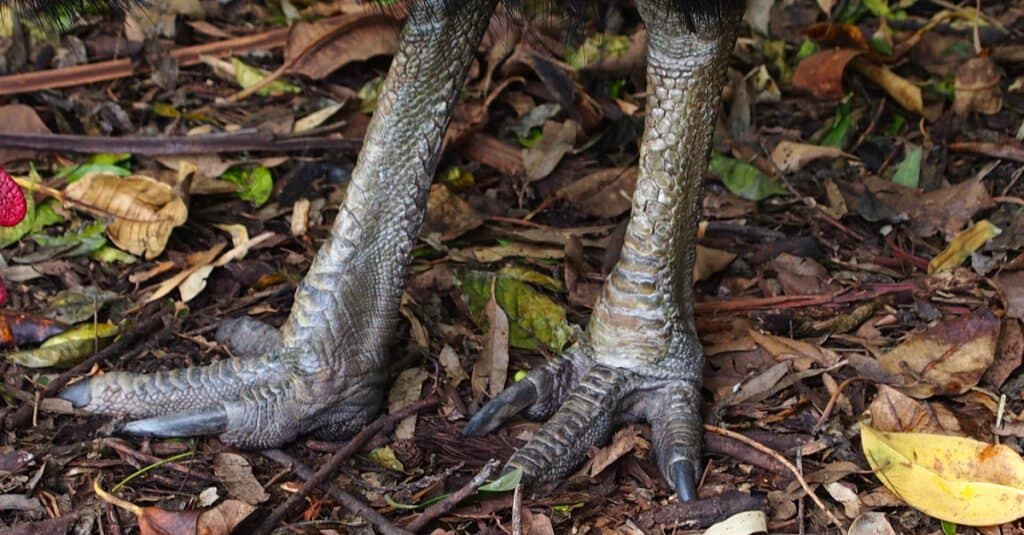The cassowary is a type of ratite, which is a long-legged, usually large, flightless bird. Its wings are nearly vestigial and only have a few quills. The feathers of the cassowary are coarse, and some of them contain filaments that are hair-like. Because of this, the cassowary was hunted and raised for its feathers. Females are bigger than males, and the bright colors of their heads and necks are more vivid. Even more striking is the knifelike claw on the inner toe of each foot, which are at least as formidable as the talons of the most powerful bird of prey.

Southern cassowary (Casuarius casuarius): The southern cassowary, or double-wattled cassowary. is the largest of the species and the third-largest bird in the world after its cousin the emu and the ostrich. It can be found in southern New Guinea, Australia’s northeastern regions, and the lowlands of the Aru Islands.
Northern cassowary (Casuarius unappendiculatus): Also called the single-wattled cassowary because it has only one wattle as compared to the southern cassowary’s two. It lives in northern New Guinea’s coastal swamplands and lowland rainforests. Populations are also found on the islands of Waigeo, Batanta, Yapen, and Salawati.
Dwarf cassowary (Casuarius bennetti): This smaller species is also known as Bennett’s cassowary after the scientist George Bennett, who examined the bird and realized it was a new species of cassowary. It is present in New Guinea, Yapen Island, and New Britain in higher elevations than the northern or southern cassowaries.
There was a fourth species, the pygmy cassowary or small cassowary (Casuarius lydekkeri) but it is extinct. Some subspecies of the extant birds have been suggested but none have been confirmed.

The cassowary is one of the closest extant relatives of dinosaurs and its descendants are believed to have evolved following the dinosaurs’ extinction around 60 million years ago. Scientific research published in 2017 revealed that a new dinosaur species named Corythoraptor jacobsi looked very much like the cassowary due to the crest on its skull.

The southern cassowary can grow between 40 to 72 inches in length, 75 inches in height, and 187 pounds in weight. Its head is topped with a horny casque that grows to between 5 and 7 inches tall and grows with the bird. It is possible to estimate the age of a grown bird by the size of its casque. The bird has a bright blue head and a red neck that bears two red wattles. Each long, scaly leg ends in a three-toed foot whose inner toe bears that lethal claw, which can be 4.7 inches long.
As its name suggests, the dwarf cassowary is the smallest species, but it is not small. Physical features include a body that’s 3 to 5 feet long and 39 to 53 inches in height. It weighs between 39 and 57 pounds. Its triangular casque is smaller than those of the northern and southern cassowaries in proportion to its body. It has a bright blue and red neck and pink cheeks.

Cassowaries can jump 7 feet in the air from a standstill and run up to 31 mph.
The southern cassowary is shy and solitary and will chase other cassowaries away except during the mating season.
Despite that famous claw, it is not used to grab prey the way raptors use their talons.
Though it is true that these birds will attack humans, they seem to only do so when they’re provoked, frightened, defending eggs or chicks, or under attack themselves. Some cassowaries associate humans with food and will simply jump at a human in expectation of a meal.
Cassowaries have been called “the most dangerous birds in the world” by publications such as The Guinness Book of World Records. That claim comes in part because there have been two recorded human fatalities and more than 200 incidents with cassowaries.
Overall, cassowary attacks are rare. Most have come because people tried feeding cassowaries, and most incidents involve the birds charging. However, in the event that a person falls to the ground cassowaries can be quite dangerous. Their dagger-like claws can grow up to 5 inches and cause severe wounds or even death.

These birds are found in New Guinea — which includes Papua New Guinea, Indonesia, and Seram, an island that is part of Indonesia — as well as the northeastern part of Australia, and the Aru Islands that lie between New Guinea and Australia.
Though they are large birds, they are secretive and hard to find in their tropical rainforest habitats. They are known to live in the Paluma Range National Park, the McIlwraith Range National Park, and the Jardine River National Park in Australia.







